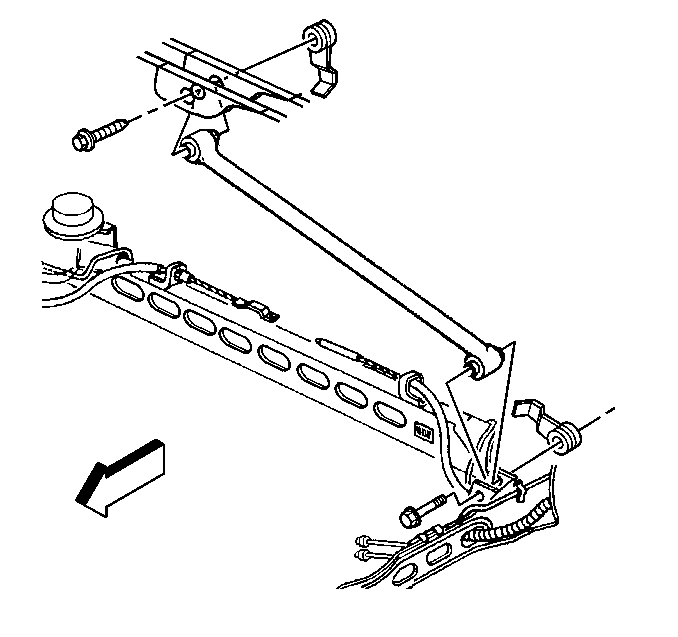Tie Rod Replacement Front Wheel Drive
Removal Procedure
- Raise and support the vehicle. Refer to
Lifting and Jacking the Vehicle
in General Information.
- If the vehicle is equipped with automatic level control, perform
the following steps:
| 2.1. | Disconnect the automatic level control sensor electrical connector. |
| | Important: Do NOT disconnect the automatic level control sensor link from the sensor
arm.
|
| 2.2. | Disconnect the height sensor link from the rear axle tie rod. |

- Remove the rear axle tie
rod bolts.
- Remove the rear axle tie rod from the vehicle.
Installation Procedure

- Install the rear axle
tie rod to the vehicle.
Notice: Use the correct fastener in the correct location. Replacement fasteners
must be the correct part number for that application. Fasteners requiring
replacement or fasteners requiring the use of thread locking compound or sealant
are identified in the service procedure. Do not use paints, lubricants, or
corrosion inhibitors on fasteners or fastener joint surfaces unless specified.
These coatings affect fastener torque and joint clamping force and may damage
the fastener. Use the correct tightening sequence and specifications when
installing fasteners in order to avoid damage to parts and systems.
- Install the rear
axle tie rod bolts and nuts.
Tighten
Tighten the rear axle tie rod bolts to 125 N·m (92 lb ft).
- If the vehicle is equipped with automatic level control, perform
the following steps:
| | Notice: When you are servicing the automatic level control sensor link, ensure that
the sensor link and the sensor arm are not damaged. Ensure the sensor arm and the
sensor link are properly oriented. Improper orientation of the sensor arm and the
sensor link may cause damage to the automatic level control system or the vehicle.
|
| 3.1. | Install the height sensor link to the rear axle tie rod. |
| 3.2. | Connect the automatic level control sensor electrical connector. |
- Lower the vehicle.


